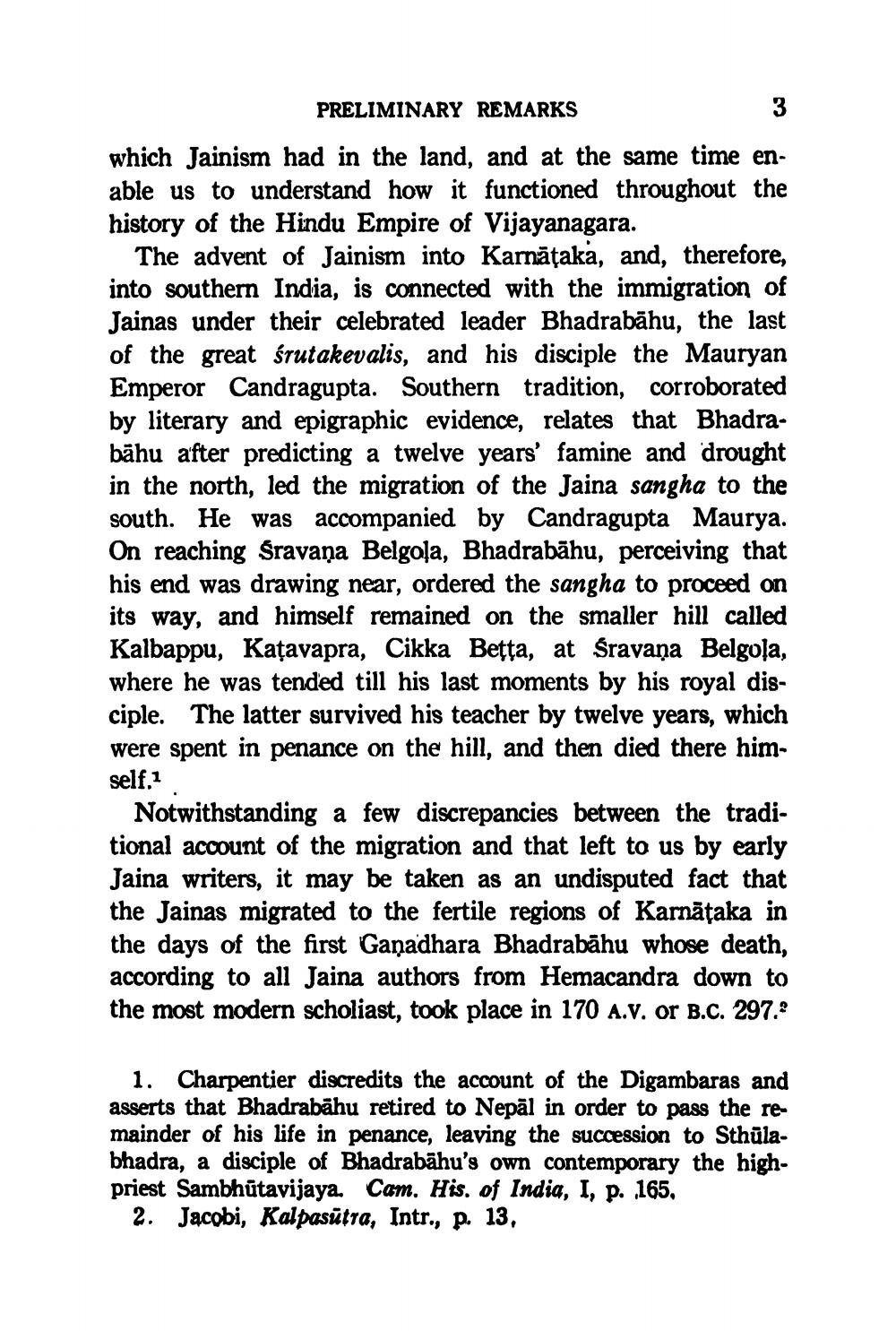________________
PRELIMINARY REMARKS which Jainism had in the land, and at the same time enable us to understand how it functioned throughout the history of the Hindu Empire of Vijayanagara.
The advent of Jainism into Kamnāšaka, and, therefore, into southern India, is connected with the immigration of Jainas under their celebrated leader Bhadrabāhu, the last of the great śrutakevalis, and his disciple the Mauryan Emperor Candragupta. Southern tradition, corroborated by literary and epigraphic evidence, relates that Bhadrabāhu after predicting a twelve years' famine and drought in the north, led the migration of the Jaina sangha to the south. He was accompanied by Candragupta Maurya. On reaching Sravaņa Belgoļa, Bhadrabāhu, perceiving that his end was drawing near, ordered the sangha to proceed on its way, and himself remained on the smaller hill called Kalbappu, Kațavapra, Cikka Betta, at Sravaņa Belgola, where he was tended till his last moments by his royal disciple. The latter survived his teacher by twelve years, which were spent in penance on the hill, and then died there himself.1
Notwithstanding a few discrepancies between the traditional account of the migration and that left to us by early Jaina writers, it may be taken as an undisputed fact that the Jainas migrated to the fertile regions of Karnātaka in the days of the first Ganadhara Bhadrabāhu whose death, according to all Jaina authors from Hemacandra down to the most modern scholiast, took place in 170 A.V. or B.C. 297.
1. Charpentier discredits the account of the Digambaras and asserts that Bhadrabahu retired to Nepāl in order to pass the remainder of his life in penance, leaving the succession to Sthūlabhadra, a disciple of Bhadrabähu's own contemporary the highpriest Sambhūtavijaya. Cam. His. of India, I, p. 165,
2. Jacobi, Kalpasūtra, Intr., p. 13,




